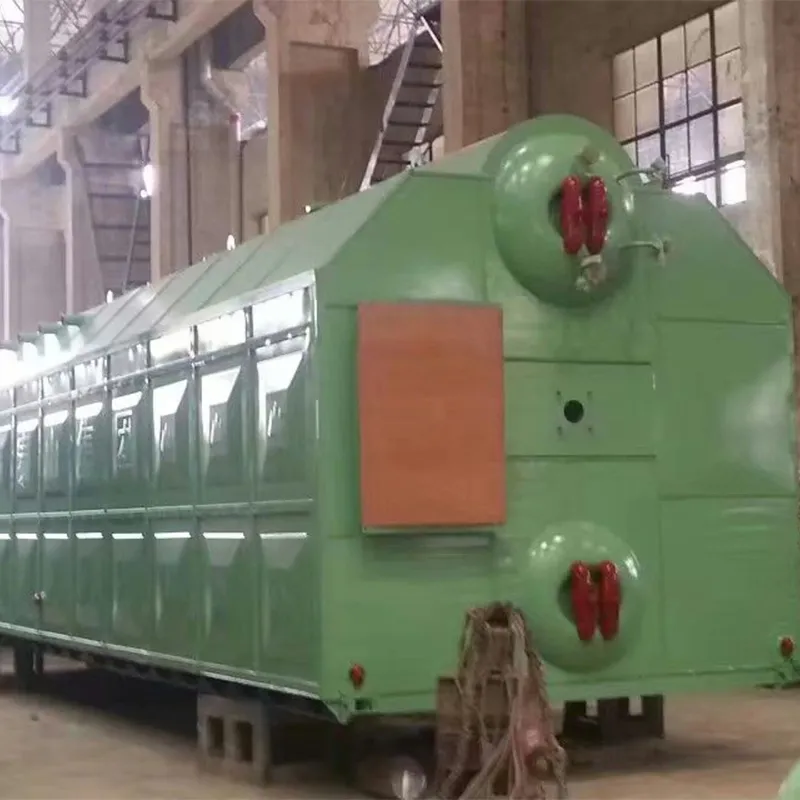coal fired steam boiler
The Role of Coal-Fired Steam Boilers in Energy Production
Coal-fired steam boilers have played a pivotal role in industrial and power generation sectors for over a century. Despite the increasing shift towards renewable energy sources, coal remains a significant part of the global energy mix, especially in developing economies. This article explores the operational mechanisms, benefits, environmental concerns, and future prospects of coal-fired steam boilers.
Operational Mechanisms
A coal-fired steam boiler operates by burning coal to generate heat, which is then used to convert water into steam. The primary components of a typical boiler include the furnace, where combustion occurs; the steam drum, where steam is collected; and various heat exchangers that maximize efficiency by transferring heat from flue gases to incoming water. The combustion process involves several stages, including pulverization of coal, mixing it with air, and igniting it inside the furnace. This process generates a substantial amount of heat, which is transferred to water circulating through the boiler.
The efficiency of coal-fired steam boilers can vary significantly, largely depending on the type of technology employed. Modern advances have led to the development of more efficient boiler designs, such as supercritical and ultra-supercritical boilers, which operate at higher pressures and temperatures, improving overall efficiency. These innovations have made coal a more competitive option in the energy landscape.
Benefits
One of the key advantages of coal-fired steam boilers is their ability to generate large quantities of steam quickly and reliably. This makes them particularly valuable in industries that require consistent steam supply for processes such as chemical manufacturing, food processing, and paper production. Moreover, coal is often more cost-effective and abundant than other fossil fuels, making it an attractive option for countries with rich coal reserves.
coal fired steam boiler

Another benefit is the established infrastructure surrounding coal mining and transportation. Many regions have extensive networks to mine and transport coal efficiently, providing a stable supply chain for industries that rely on coal-fired steam boilers.
Environmental Concerns
While coal-fired steam boilers have many advantages, they are also associated with significant environmental concerns. The combustion of coal releases a substantial amount of carbon dioxide (CO2), a greenhouse gas linked to climate change. Additionally, other harmful emissions such as sulfur dioxide (SO2), nitrogen oxides (NOx), and particulate matter can have detrimental effects on air quality and public health.
In response to these issues, many coal-fired power plants have implemented emissions control technologies, such as scrubbers and electrostatic precipitators, to reduce harmful emissions. Furthermore, there is an ongoing shift towards cleaner coal technologies, including carbon capture and storage (CCS), which aims to capture CO2 emissions before they enter the atmosphere.
Future Prospects
The future of coal-fired steam boilers is a topic of considerable debate. As global efforts to combat climate change intensify, many countries are setting ambitious targets to reduce their reliance on fossil fuels. However, in the short term, coal remains a crucial component of energy production in many nations, particularly in Asia, where rapid industrialization continues to drive demand for reliable and affordable energy sources.
In conclusion, coal-fired steam boilers continue to be an essential part of the energy production landscape. They offer significant advantages in terms of reliability and cost-effectiveness but also pose serious environmental challenges. The future of this technology will largely depend on the industry's ability to innovate and implement cleaner technologies while balancing energy needs and environmental protection. As the world transitions towards more sustainable energy systems, coal-fired steam boilers will likely evolve to play a crucial role in bridging the gap between traditional and renewable energy sources.
-
Industrial Steam Boiler Corporation - Reliable Industrial Boiler Manufacturer & SupplierNewsJul.08,2025
-
High-Efficiency Steam Boiler Heat Exchanger Supplier & Factory Durable Products for IndustryNewsJul.08,2025
-
Premium Electric Steam Boiler Manufacturer Reliable Company & Factory SolutionsNewsJul.08,2025
-
Commercial Hot Water Boiler - Reliable Supplier & Factory Direct Price for Efficient Heating SolutionsNewsJul.07,2025
-
Top Hot Oil Boiler Manufacturer - Reliable Thermal Oil & Coal Fired Boiler Manufacturer ManufacturerNewsJul.07,2025
-
High-Efficiency Hotel Hot Water Boiler – Leading Exporters & Quotes for HotelsNewsJul.07,2025

